How to Choose the Right LVDS Connector Cable for Your Display Needs
Looking for the perfect LVDS Connector cable for your display needs? Look no further! In this article, we will guide you through the process of choosing the right LVDS cable to ensure optimal performance for your display.
What is an LVDS Connector?
An LVDS connector is designed to support LVDS data transmission, a technology that uses low voltage to transmit high-speed signals with minimal electromagnetic interference (EMI). These connectors are commonly used in display panels, medical imaging systems, and industrial control equipment. Compared to traditional parallel data transmission, LVDS interface technology enables high-frequency LVDS connectors to achieve faster speeds with lower power consumption.
When it comes to LVDS cables, there are several factors to consider. One of the most important is compatibility with your display device. Different displays have different connector types, so it’s essential to choose a cable that matches your device’s input ports.
Another crucial aspect is the length of the cable. Too short, and it won’t reach. Too long, and you might experience signal degradation. Understanding the specific requirements of your display setup will help you determine the ideal cable length.
Additionally, considering the resolution and refresh rate of your display is vital. High-resolution displays and fast refresh rates demand cables with higher bandwidth capabilities.
Lastly, don’t forget about shielding. Shielded cables can provide better protection against electromagnetic interference, resulting in a clearer and more stable signal.
By taking these factors into account, you can confidently select the perfect LVDS cable for your display needs and enjoy a superior visual experience. Let’s get started!
Types of LVDS Connectors
There are several LVDS connector types depending on their application and form factor:
- LVDS FPC connector – Flexible printed circuit connectors for compact designs.
- Board-to-board LVDS connectors – Used in PCB connections to ensure high-speed data transfer.
- Automotive LVDS connectors – Designed for in-vehicle displays and ADAS (Advanced Driver Assistance Systems).
- Custom LVDS connectors – Tailored for specific industrial applications.
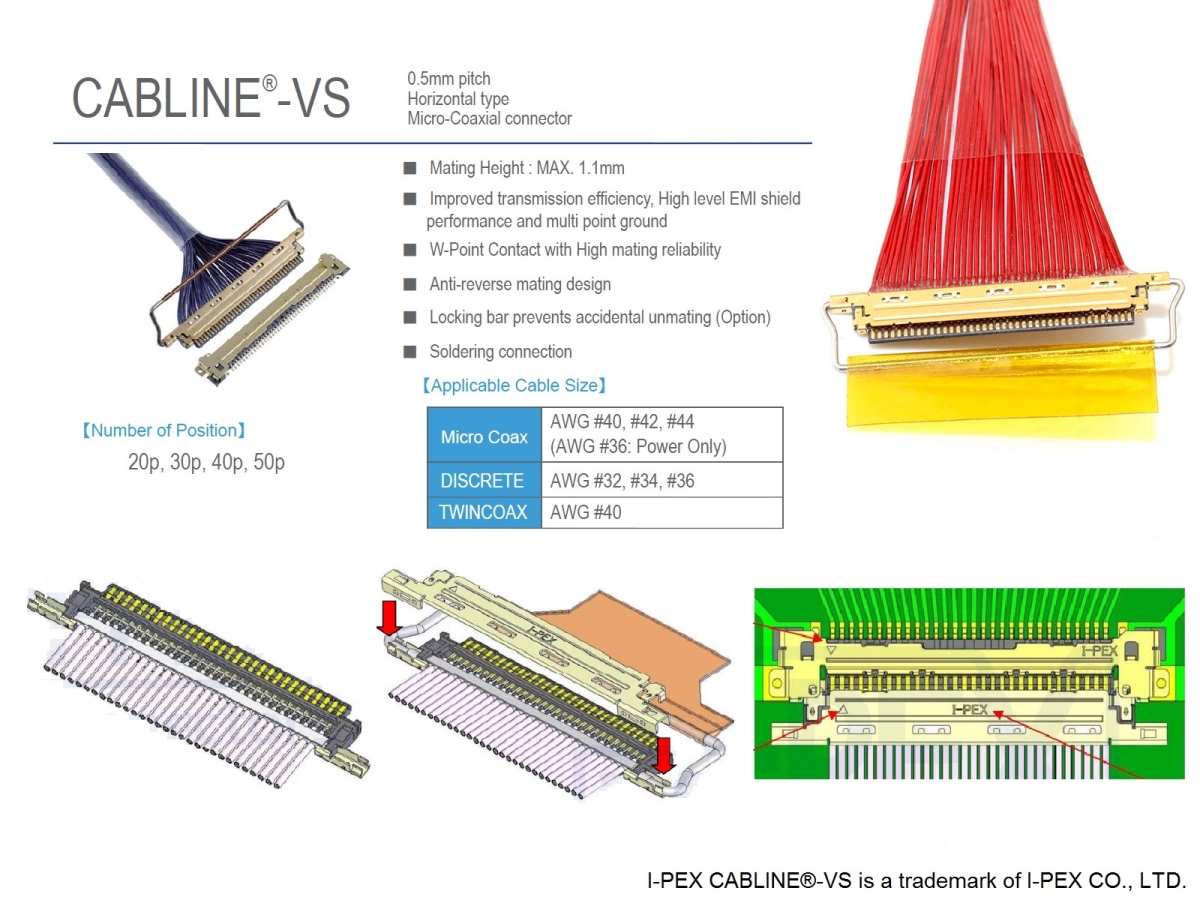
Understanding the importance of choosing the right LVDS cable
When it comes to LVDS cables, making the right choice is crucial. A high-quality cable is essential for transmitting video signals from your display device to the screen effectively. Choosing the wrong cable can result in poor image quality, flickering, or even a complete loss of signal. To avoid these issues, it’s important to understand the factors to consider when selecting an LVDS cable.
How to Choose an LVDS Connector?
When selecting an LVDS cable connector, consider the following:
- Signal Integrity – Choose a high-speed LVDS connector to ensure stable transmission.
- Application-Specific Design – For industrial and automotive applications, opt for rugged LVDS connectors.
- Connector Size & Pin Configuration – Mini LVDS connectors are suitable for compact devices.
- Compatibility – If integrating with other systems, LVDS to HDMI adapters or LVDS to USB converters may be needed.
Factors to consider when choosing an LVDS cable
1. Compatibility with Your Display Device
Different displays have different connector types, such as LVDS 30-pin, LVDS 40-pin, or LVDS 51-pin. It’s essential to choose a cable that matches your device’s input ports. Before purchasing a cable, check the specifications of your display and ensure that the cable has the appropriate connector type.
2. Length of the Cable
The length of the LVDS cable is another crucial factor to consider. If the cable is too short, it won’t reach the required distance between your display and the source device. On the other hand, if the cable is too long, you might experience signal degradation, resulting in a loss of image quality. Measure the distance between your display and the source device accurately to determine the ideal cable length.
3. Resolution and Refresh Rate of Your Display
The resolution and refresh rate of your display play a significant role in choosing the right LVDS cable. High-resolution displays and fast refresh rates demand cables with higher bandwidth capabilities. Ensure that the cable you select can support the maximum resolution and refresh rate of your display to avoid any compatibility issues.
4. Shielding
Shielding is an important feature to consider in an LVDS cable. Shielded cables provide better protection against electromagnetic interference (EMI), which can cause signal degradation and image distortions. When choosing an LVDS cable, opt for one with proper shielding to ensure a clearer and more stable signal.
Understanding LVDS Connectors: A Guide to High-Speed Data Transmission
LVDS connectors (Low Voltage Differential Signaling connectors) are essential components for high-speed, low-power data transmission. They are widely used in industries such as automotive, industrial automation, medical devices, and aerospace. This article will explore LVDS connectors, their applications, and how to choose the right type for your needs.
LVDS Connectors in Different Industries
LVDS connectors are widely used across multiple industries:
- Automotive – LVDS connectors for automotive applications support infotainment systems and cameras.
- Medical Devices – LVDS cable for medical devices ensures high-resolution imaging.
- Aerospace – High-frequency LVDS connectors are essential for avionics.
Whether you need an LVDS connector for display panels, industrial automation, or high-speed data transmission, choosing the right LVDS connector type is crucial for performance and reliability. If you’re looking for custom LVDS connectors or LVDS connector pricing, feel free to contact us for more information.
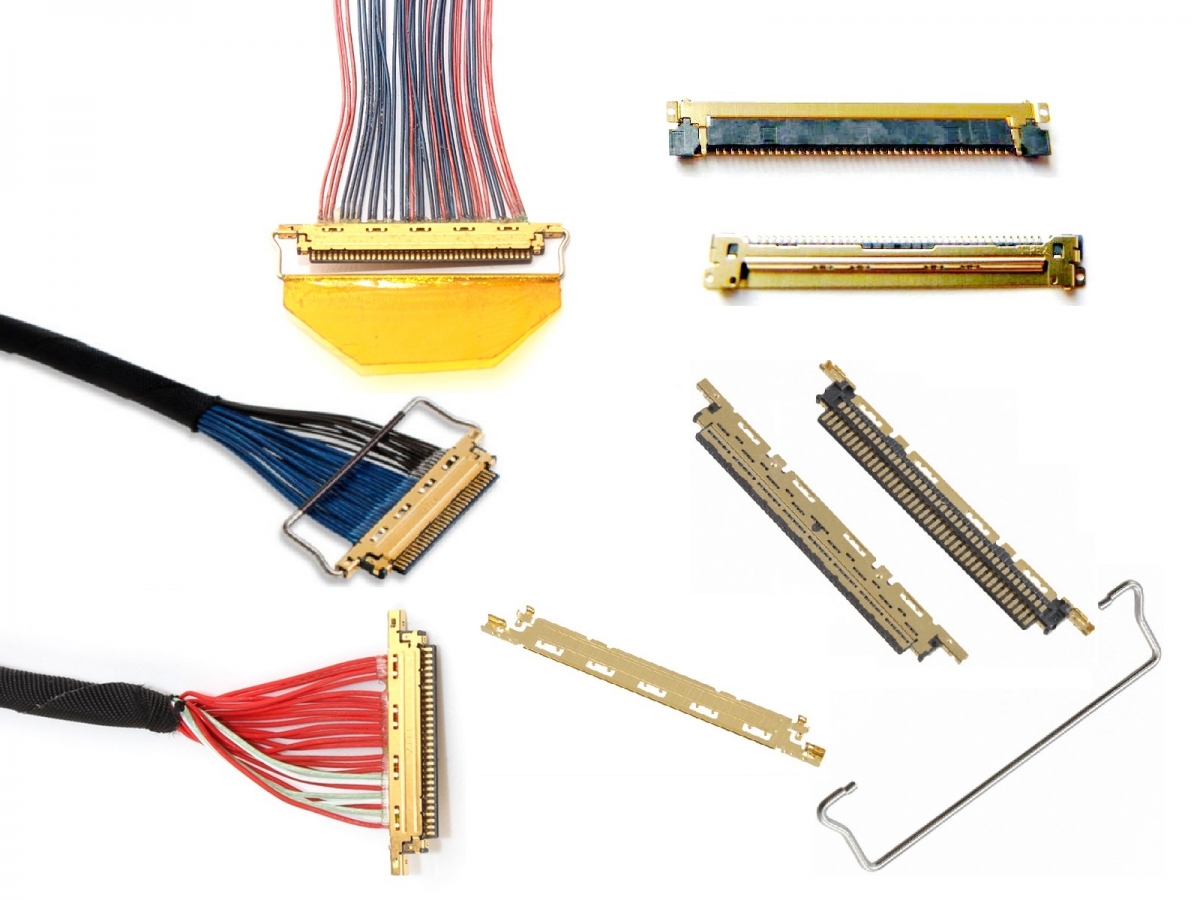
I-PEX 20453-040T 20455-040E Cable Assembly LVDS Connectors
Different types of LVDS cables available in the market
LVDS cables come in various types, each designed to meet specific display requirements. Let’s take a closer look at the different types of LVDS cables available:
1. LVDS Flat Ribbon Cable
This type of LVDS cable consists of multiple conductors organized in a flat ribbon form. LVDS flat ribbon cables are commonly used in displays that require a high number of conductors for transmitting video signals. They offer excellent signal integrity and are suitable for applications with tight space constraints.
2. LVDS Coaxial Cable
LVDS coaxial cables consist of a central conductor surrounded by an insulating layer and a metallic shield. These cables provide better EMI protection and are suitable for high-frequency applications. LVDS coaxial cables are commonly used in displays that require long cable lengths or in environments with high EMI.
3. LVDS Flex Cable
LVDS flex cables are flexible circuit boards that provide excellent mechanical reliability and flexibility. They are suitable for applications with tight bending requirements or where the display and the source device are connected through a hinge mechanism. LVDS flex cables are often used in laptops, tablets, and other portable devices.
-

JAE FI-RE51HL RE41CL LVDS Cable Assemblies -
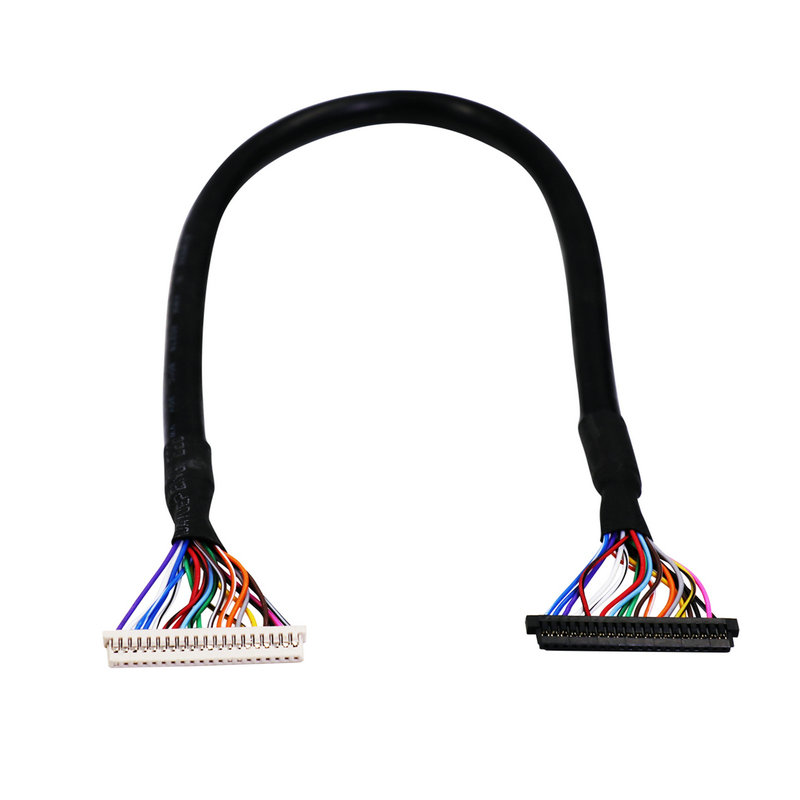
JAE FI-X30HL Hirose FI-S20S LVDS Cable Assembly -
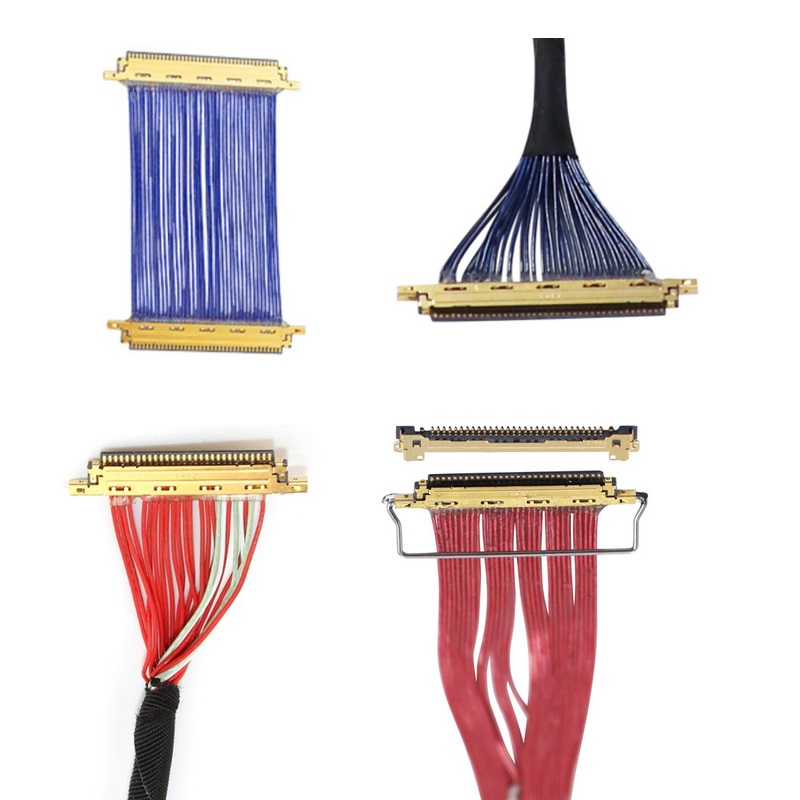
Custon I-PEX Micro-coaxial Cable -

I-PEX 20453-040T 20455-040E Cable Assembly
How to determine the correct LVDS cable specifications for your display
To determine the correct LVDS cable specifications for your display, follow these steps:
1. Identify the Connector Type
Check the specifications of your display device to identify the connector type it uses. Common LVDS connector types include 30-pin, 40-pin, and 51-pin. Make a note of the connector type as it will help you find a compatible cable.
2. Determine the Required Cable Length
Measure the distance between your display and the source device to determine the required cable length. Ensure that the cable you choose is long enough to reach the desired distance without any tension or strain.
3. Consider the Resolution and Refresh Rate
Check the specifications of your display to determine its maximum resolution and refresh rate. Choose an LVDS cable that can support these specifications to ensure optimal performance.
4. Evaluate Shielding Requirements
Consider the environment in which your display will be used. If there are potential sources of electromagnetic interference, choose an LVDS cable with proper shielding to minimize signal degradation.
By following these steps, you can determine the correct LVDS cable specifications for your display and ensure a seamless video signal transmission.
Tips for selecting a high-quality LVDS Connector cable
When selecting an LVDS Connector, keep the following tips in mind to ensure you choose a high-quality cable:
1. Research and Compare Brands
Research different brands and compare their LVDS cables. Look for reputable brands that have a track record of providing high-quality cables. Read customer reviews and ratings to gauge the reliability and performance of the cables.
2. Check for Certification
Look for LVDS cables that are certified by industry standards organizations. Certification ensures that the cable meets specific quality and performance standards, giving you peace of mind regarding its reliability.
3. Consider Cable Thickness and Flexibility
Thicker cables generally offer better signal integrity and durability. However, they may be less flexible, making installation more challenging. Balance the thickness and flexibility based on your specific requirements.
4. Invest in Proper Cable Management
Proper cable management is essential for maintaining signal integrity and preventing cable damage. Use cable clips, ties, and conduits to organize and protect the LVDS cable from potential hazards.
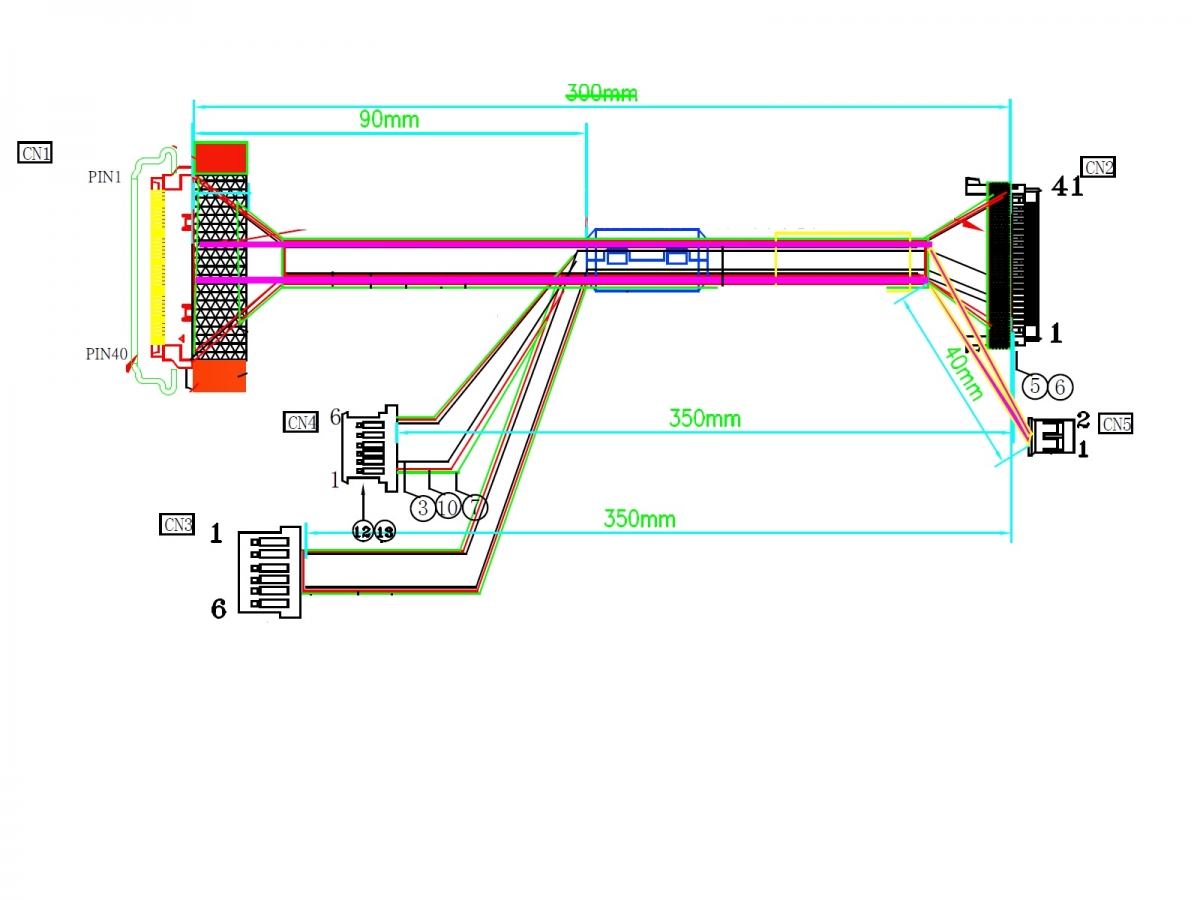
Common mistakes to avoid when choosing an LVDS cable
Avoid these common mistakes when selecting an LVDS cable:
1. Choosing the Wrong Connector Type
Ensure that the LVDS cable you choose has the correct connector type that matches your display device. Choosing the wrong connector type will render the cable incompatible and unusable.
2. Neglecting Cable Length Requirements
Measure the distance between your display and the source device accurately. Neglecting cable length requirements can result in a cable that is either too short or too long, leading to signal degradation or an inability to connect the devices.
3. Ignoring Shielding for EMI Protection
If your display environment is prone to electromagnetic interference, ignoring the need for shielding can result in poor signal quality and image distortions. Always choose an LVDS cable with proper shielding to minimize EMI-related issues.
4. Opting for Cheap, Low-Quality Cables
While it may be tempting to opt for cheaper LVDS cables assembly, they often lack the necessary quality and performance standards. Investing in a high-quality cable will ensure a reliable and long-lasting connection between your display device and the source.
Troubleshooting common issues with LVDS cables
Even with the right LVDS cable, issues may sometimes arise. Here are some common issues and troubleshooting tips:
1. Flickering or No Image
Check the cable connections at both ends to ensure they are secure. If the cable is loose, reattach it firmly. Test the cable with another display device to rule out any issues with the display itself.
2. Poor Image Quality or Signal Degradation
Ensure that the cable length is within the specified limits for your display. If the cable is longer than recommended, consider using a shorter cable. If the issue persists, check for any kinks or damage to the cable that may be affecting the signal quality.
3. Interference or Noise
If you are experiencing interference or noise, check for potential sources of EMI in your display environment. Move any electronic devices or power sources away from the cable to minimize interference. Consider using a shielded LVDS cable for better EMI protection.
The future of LVDS technology and potential alternatives
While LVDS technology has been widely used for many years, advancements in display technology have led to the emergence of alternative solutions. Some potential alternatives to LVDS include:
1. Embedded DisplayPort (eDP)
eDP is a display interface standard that offers higher transmission speeds and supports higher resolutions compared to LVDS. It is commonly used in modern laptops, tablets, and other portable devices using eDP cable assembly.
2. High-Definition Multimedia Interface (HDMI)
HDMI is a widely adopted interface for transmitting high-definition video and audio signals. It offers compatibility with a wide range of devices, including TVs, monitors, and projectors.
3. Video Electronics Standards Association (VESA)
VESA standards, such as DisplayPort, provide high-bandwidth transmission capabilities and support advanced features like multi-streaming and daisy-chaining.
While these alternatives offer advantages over LVDS, the technology is still widely used and supported. The choice between LVDS and alternative solutions depends on specific display requirements and compatibility with existing devices.
-
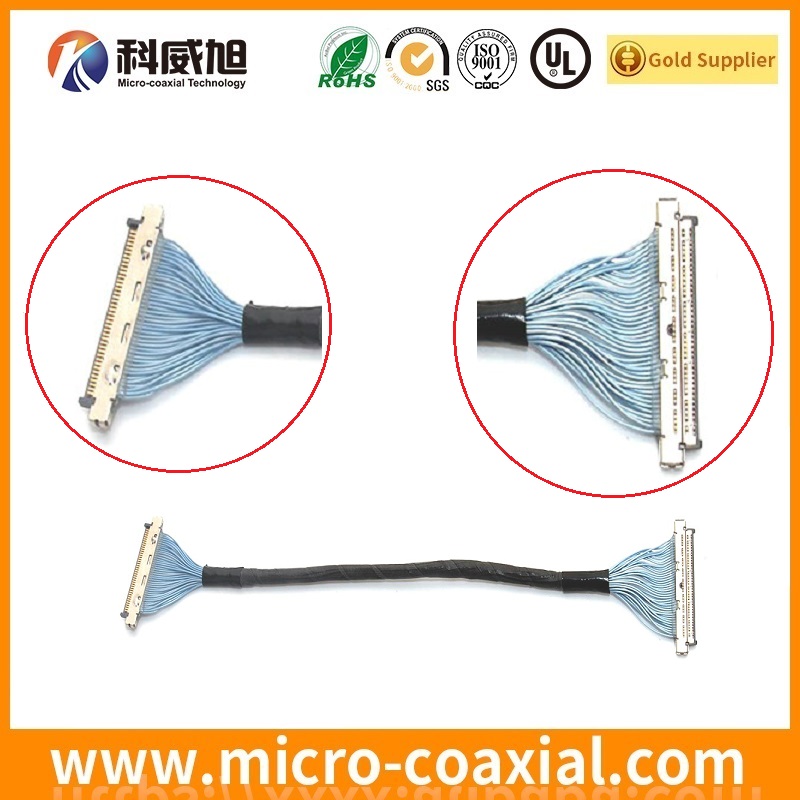
Custom LVDS Cable -
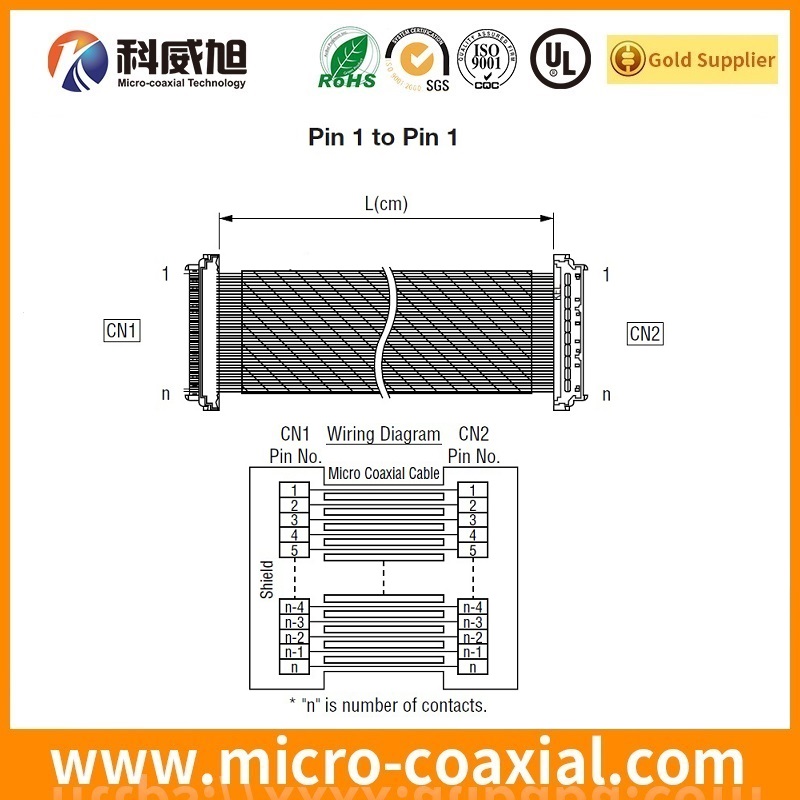
KEL LVDS Micro-coaxial Cable -
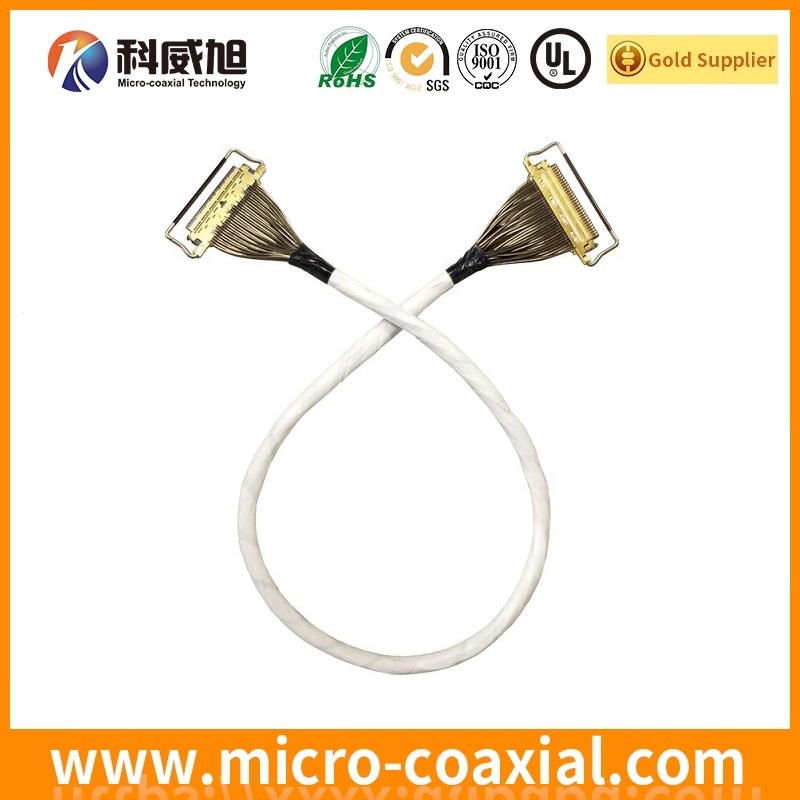
Imaging Sensor Cable -
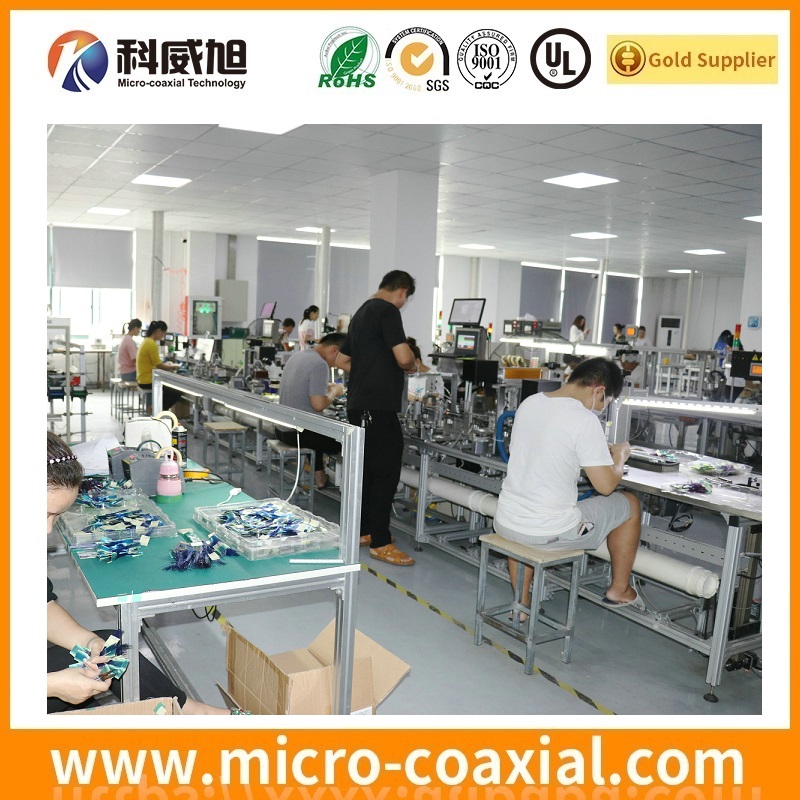
LVDS Cable Assemblies Factory
Conclusion and final thoughts on choosing the right LVDS cable
Choosing the right LVDS cable is essential for ensuring optimal performance and a superior visual experience. Consider the compatibility with your display device, cable length requirements, resolution and refresh rate, and the need for shielding. Research different brands, check for certifications, and invest in proper cable management to ensure a high-quality connection.
By avoiding common mistakes and troubleshooting any issues that may arise, you can enjoy a seamless video signal transmission. While alternative display interfaces are gaining popularity, LVDS technology continues to be a reliable choice for many applications. Evaluate the specific requirements of your display setup and make an informed decision when selecting an LVDS cable.
We are A professional micro coaxial cable assembly manufacturer.
Contact us to Customize your LVDS Cable Assemblies, I-PEX Micro-coaxial Cable, Discrete Wire Harness.
Email: sales@micro-coaxial.com
Wechat: +86-158-8966-1771
SKYPE: jacky882010
QQ: 1379887553
ADD:NO.18, Songpu Rd,Luzhi Town, Suzhou 215127, China
